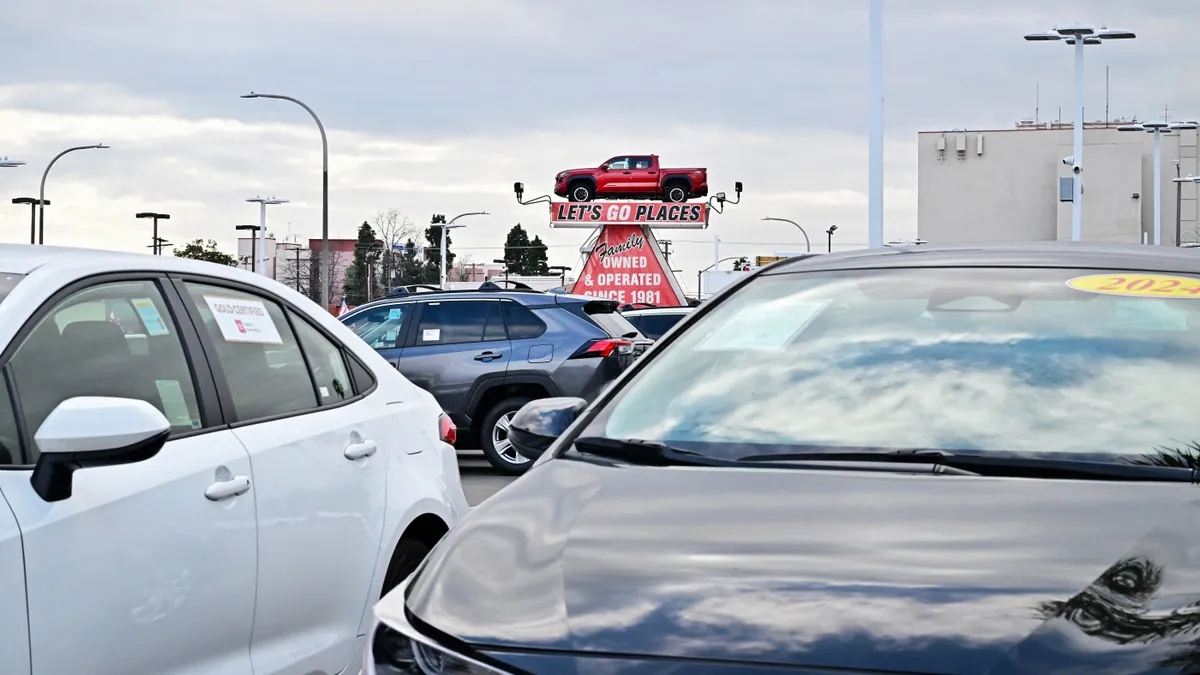
The recent announcement of tariffs has sparked a significant surge in activity on America's auto lots. Automakers are rolling out substantial discounts, prompting many buyers to rush into showrooms before prices escalate. However, this rush is fueled by economic uncertainty and carries cautionary signs, particularly for budget-conscious shoppers.
For instance, Kyra Nay, a children's librarian from Ohio, originally planned to purchase a larger vehicle for her expanding family next year. However, the announcement of tariffs from the White House hastened their decision. “With the tariffs and so much uncertainty, we decided we couldn't wait any longer,” she explained. In late March, she and her husband purchased a Honda CR-V, joining a wave of buyers eager to secure pre-tariff pricing. Nay reported a bustling dealership, a stark contrast to the anticipated calm March sales.
According to data from Cox Automotive, the spike in sales following Trump's March 26 tariff announcement resulted in the highest new car sales in four years. Economists predict that this rush may continue for a couple of months; however, they caution that once tariff-driven price increases set in, sales are likely to slow down.
Not all consumers are racing to buy new vehicles. For example, Jennifer Jarvis, a pharmacist in Michigan, had considered purchasing a new family SUV but opted to repair her old minivan instead. “The thought of trying to buy a car in this market, with the tariffs and everything else, was daunting,” she remarked. This sentiment echoes across the nation as many shoppers are postponing their vehicle purchases due to fears of job insecurity or the need to save in anticipation of a potential recession.
Amid this conflicted consumer behavior, the tariff landscape continues to evolve. Recently, President Trump announced a 90-day pause on several tariffs, although critical ones affecting the auto industry remain in effect. These include a 25% tariff on imported cars, planned tariffs on car parts, and similar tariffs on the steel and aluminum used in vehicle manufacturing
Despite these challenges, demand for new vehicles is currently high, and there are attractive deals available for consumers. Manufacturers are providing significant incentives, and many vehicles currently on dealer lots or in transit are not yet affected by the new tariffs. Scott Kunes, COO of the Kunes Auto and RV Group, noted that dealers typically maintain a two- to three-month supply of vehicles, which acts as a buffer against immediate price hikes. However, if tariffs remain, analysts predict that vehicle prices could rise by thousands of dollars, varying by manufacturer and model.
Kunes raised an important point regarding the used car market. As tariffs on new cars increase demand for used vehicles, the costs of repairs will likely rise due to tariffs on parts. This situation has already led to a surge in used car prices. Data from iSeeCars indicates that while used car prices were stable for six months, they began to climb again in March. Popular used cars could see price increases ranging from $890 to $5,169 if market conditions mirror those experienced during the early COVID-19 pandemic.
Currently, finding a reliable used vehicle under $25,000 is increasingly difficult, according to Kunes. The lowest-cost used cars that once sold for around $5,000 now often exceed $8,000 to $10,000. Connecticut shopper Angelica DeLeon illustrates this challenge. After losing her car during the pandemic, she has been relying on rides from friends and family. Having saved for two years and recently secured a full-time job, she is now searching for a reliable vehicle within her $10,000 budget but is struggling to find options that meet her needs.
As DeLeon poignantly questions, “What are you supposed to do when you're making the minimum and need a car?” This dilemma is becoming increasingly common as economic conditions fluctuate. The ongoing chaos surrounding tariffs is exacerbating the already challenging landscape for car buyers across the country, making it essential for consumers to stay informed and strategic about their purchasing decisions.